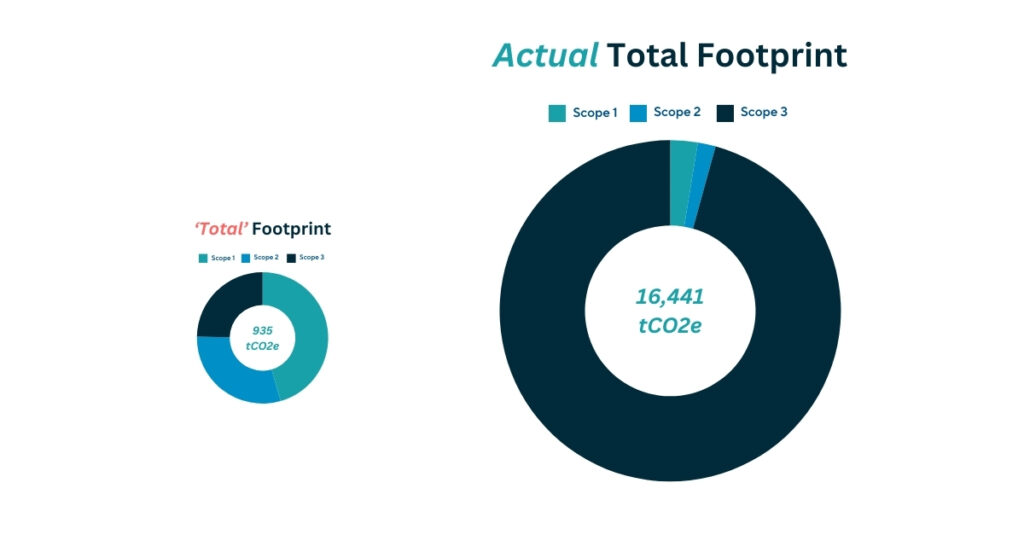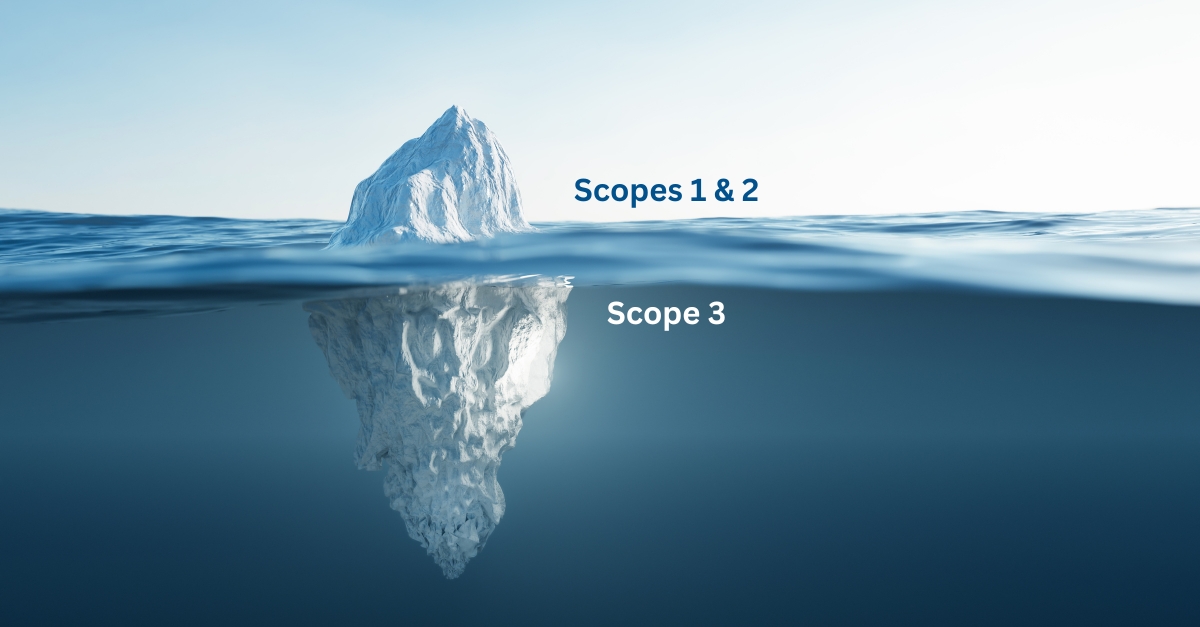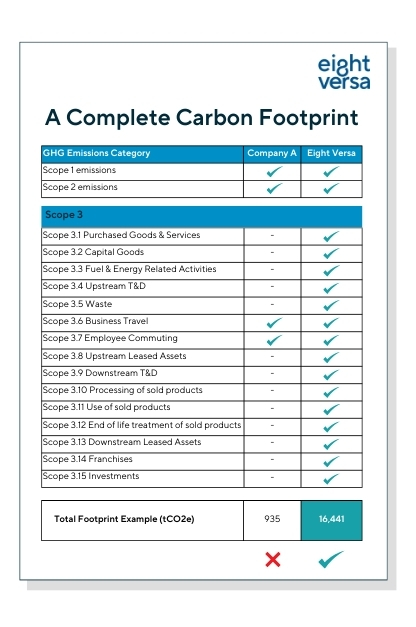Don’t worry, it seems many organisations are.
The Biggest Barrier
The scale of Scope 3 emissions is starting to dawn on organisations. As they slowly get to grips with measuring and reducing their emissions, they are now beginning to face a gigantic wall that is their entire value chain. The second round of SBTi companies who have had their commitments removed happened earlier this month and there were some valuable insights gained from a recent survey of those participating. The number one barrier faced in setting Net Zero targets was that ‘Scope 3 is too much of a challenge’ (53.6%).
Not Even Started
Barriers to Setting Net Zero Targets

All types of organisations are facing this challenge, whether big or small. After recently updating their Scope 3 targets, Unilever released the following statement: “achieving significant absolute reductions in our Scope 3 emissions has proven challenging.” This is the difficulty faced with those who have made it this far, but there is another issue, which is that the majority of organisations haven’t even started. According to a CDP report, only 15% of UK companies have disclosed Scope 3 emissions in their targets. And this only reveals half the story. As Scope 3 has several categories (15 to be precise), this stat does not tell you the level of coverage companies have included within their Scope 3 carbon footprint measurement.
‘Partial’ Scope 3
The final, and maybe most concerning hurdle is how the market is getting confused around Scope 3. There are multiple companies who are setting long-term targets but only basing it on a baseline footprint that includes part of their Scope 3. There is an array of those claiming that they will be Net Zero by 2030 for example but have only included two Scope 3 categories out of a possible fifteen. Whilst the GHG Protocol does provide guidance on excluding Scope 3 categories based on whether or not they are material to company operations, there are examples from across multiple industries which suggest material Scope 3 emissions categories are not currently being included within a companies Scope 3 Carbon Footprint measurement. This creates a major misrepresentation of what emissions are being accounted for and therefore confusion over what the true meaning of ‘Scope 3 emissions’ actually is. To give you an idea of the scale of this mishap, here are examples of two companies that have measured their Scope 3 emissions. One includes a partial Scope 3 measurement, and the other includes a full Scope 3 measurement. The difference is stark.

Turning the Tide
Tackling the monster of Scope 3 is not easy. We understand the challenges around the complexities of such a beast. Yet if serious about your carbon emissions, then it is a challenge that should be faced head on. The main starting point is ensuring that you have measured your entire Scope 3. For companies who have chosen to measure partial Scope 3, they will soon have a surprise when they start to include additional Scope 3 categories that are material to company operations, driving up any previous baseline developed by the organisation. Unfortunately, any reduction plans or targets being set based on a partial Scope 3 will be redundant as they will have to eventually re-baseline their footprint when including the remaining Scope 3 categories.
Supplier Engagement
The second phase once your entire Scope 3 has been measured, is looking at how you will reduce Scope 3. Now, don’t expect overnight success here. This is the meatiest part of your decarbonisation efforts. As some of the feedback from the SBTi survey showed, “supplier engagement programmes take time to build, more time to result in supplier action, and even more time for results to show up in actual emissions reductions.” But time is on the side of those who have already started. By engaging early with suppliers and pushing the needle, you’ll be much closer to reaching your set goals compared to others.
Steer Clear of Uncertainty
“I see too many peers talking about their science-based targets without having it validated”, said one of the respondents from the SBTi survey. The talk about becoming Net Zero seems to be greater than the actions around becoming Net Zero. And the reason is because it’s a wild west out there – companies can all pledge to reach the same long-term goal but provide little to mixed evidence of how those goals will actually be achieved in principle. Ultimately making the pledges meaningless. There is a hero in this story however, and that’s third-party verification. Rather than companies marking their own homework, seeking out a third-party to verify your footprint calculations can ensure your reduction efforts are reaching the necessary year-on-year targets and align with best practice. Having this level of verification for both measuring and reducing your carbon footprint will help steer you clear of any uncertainty. Plus, you can rest assured that your entire Scope 3 will be included so that there’s nothing to be afraid of.
Robert Franklin, Lead Sustainability Consultant
Robert is a Lead Sustainability and Carbon Footprinting Consultant at Eight Versa who specialises in assisting clients with the calculation of their organisational carbon footprint and supporting the development of dedicated strategies to reduce operational emissions.







